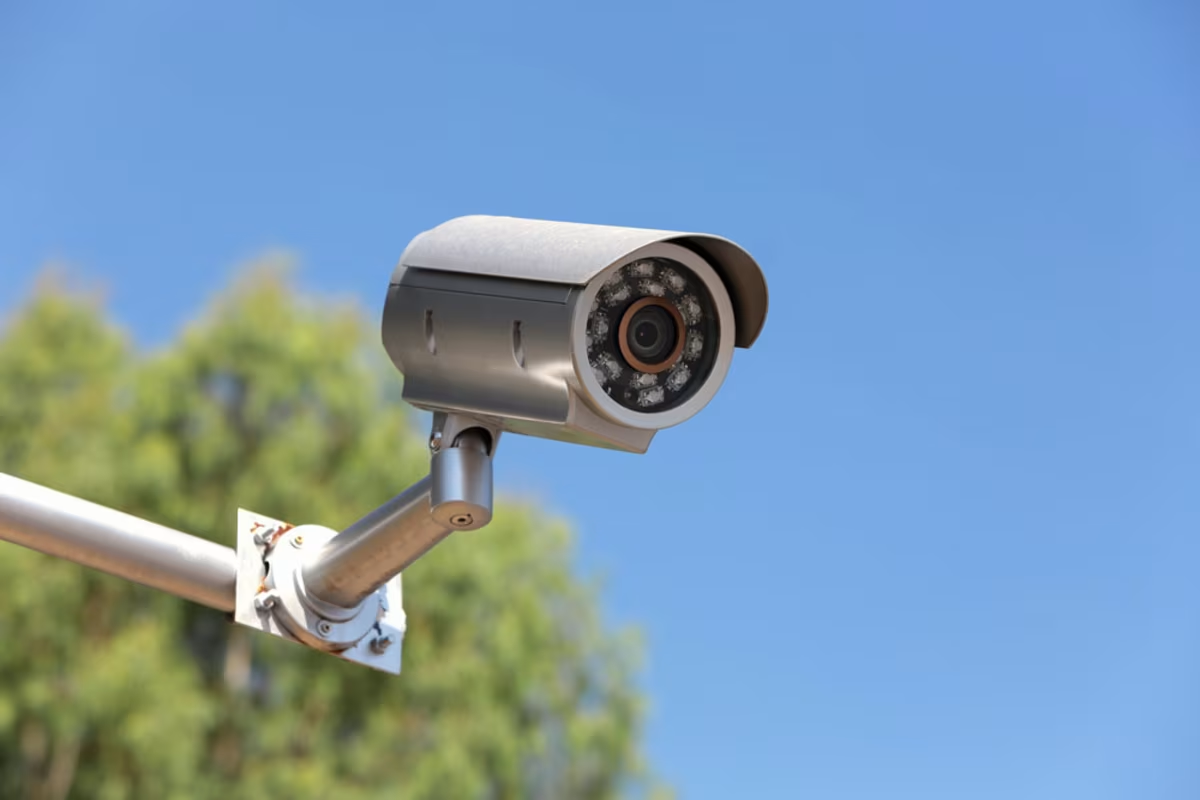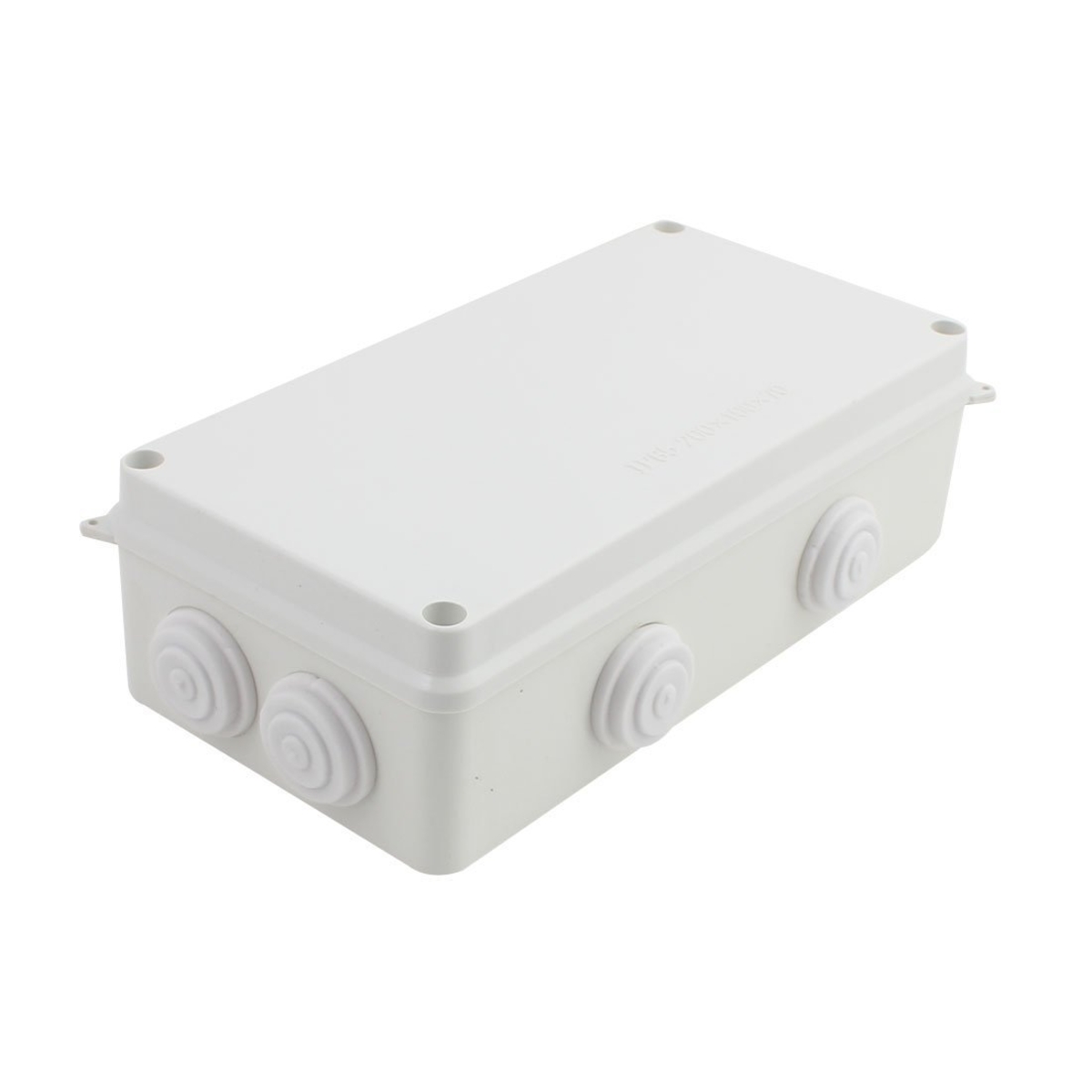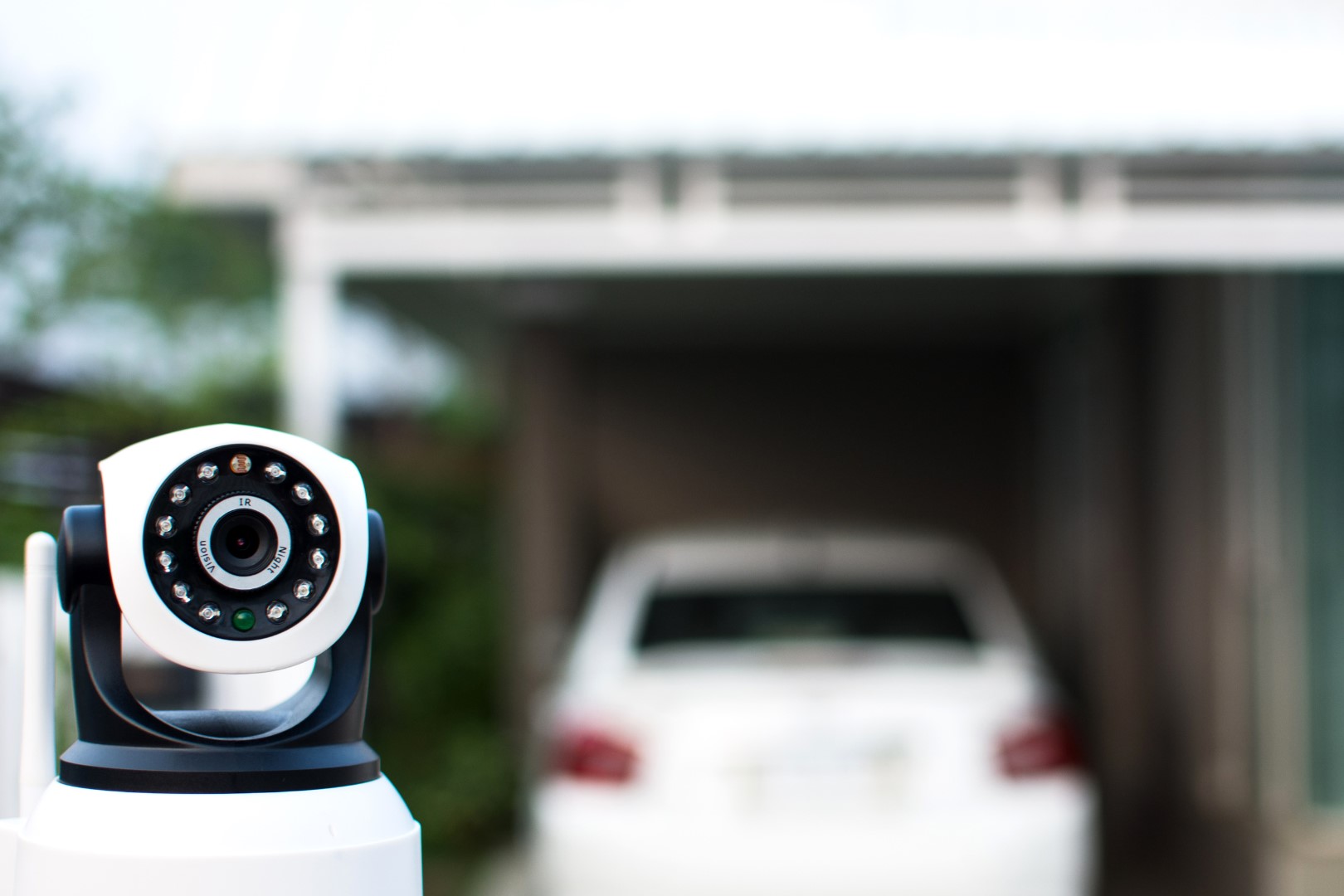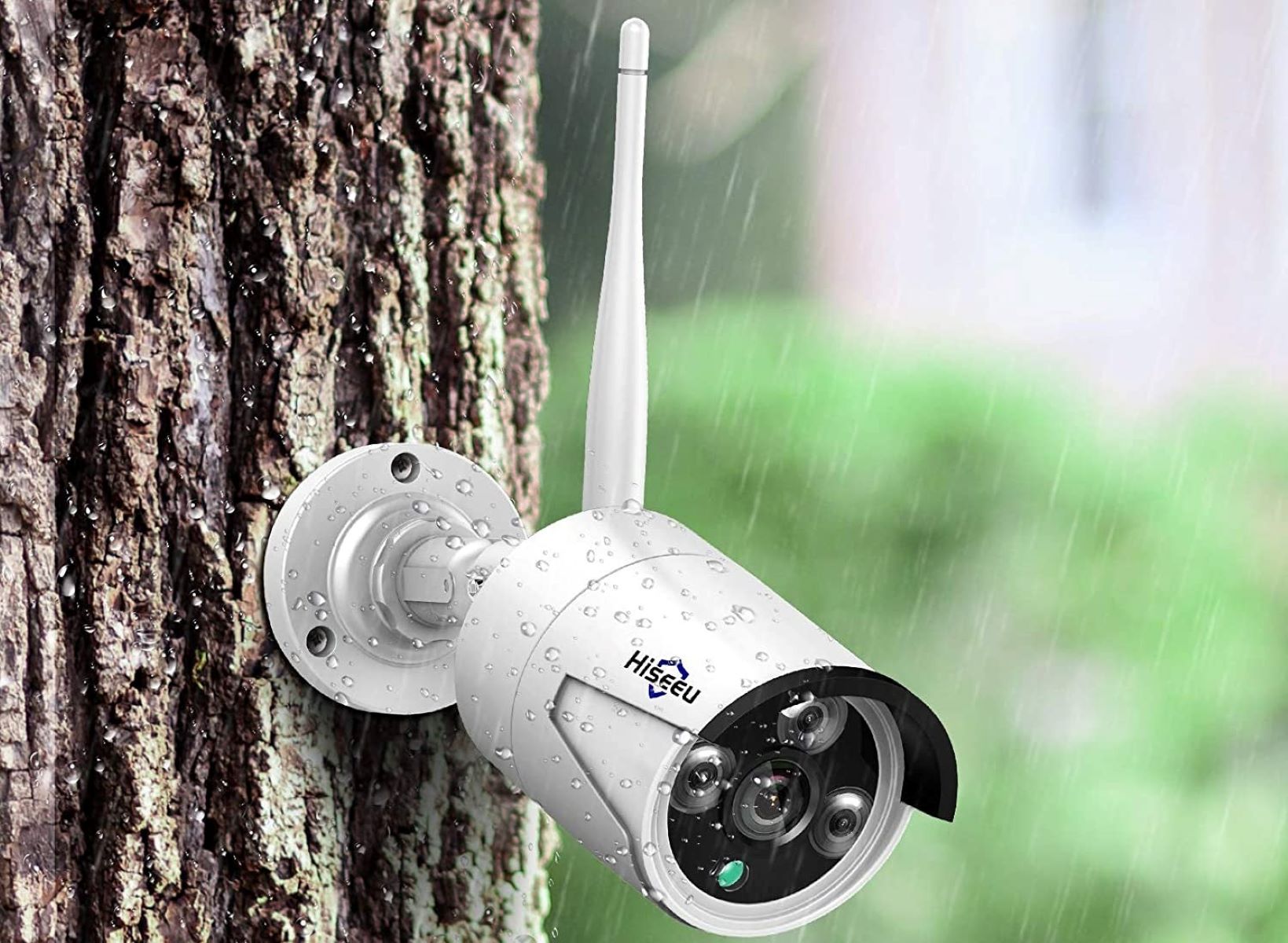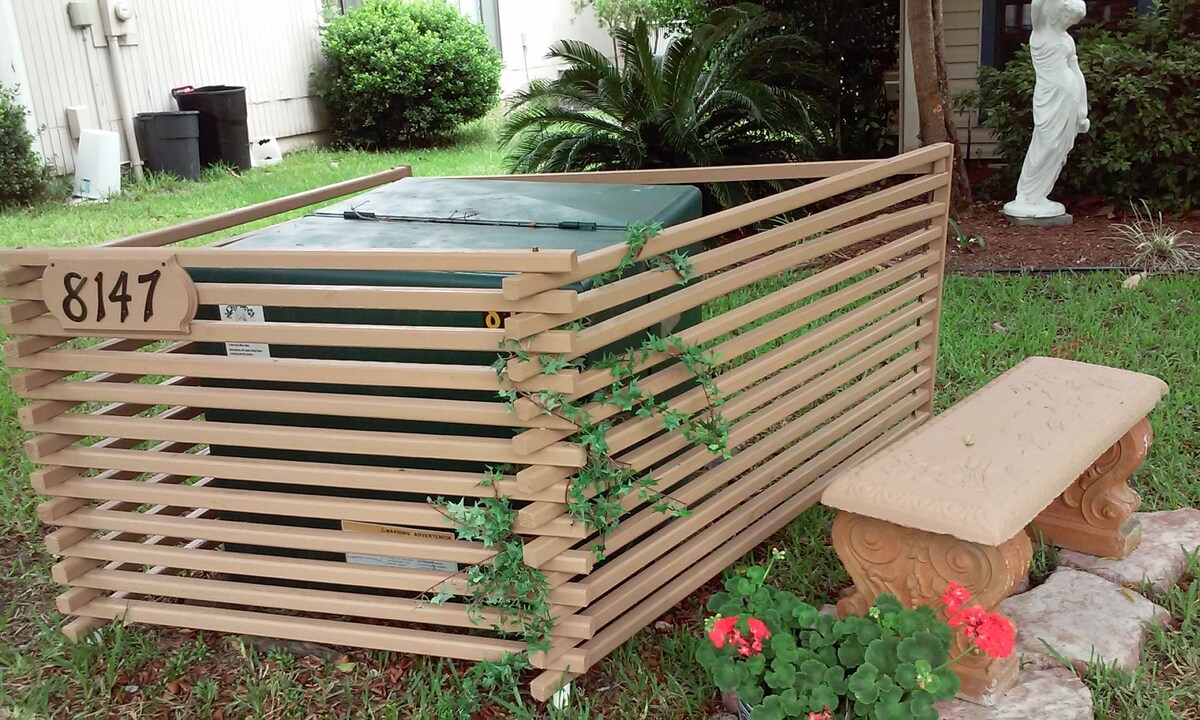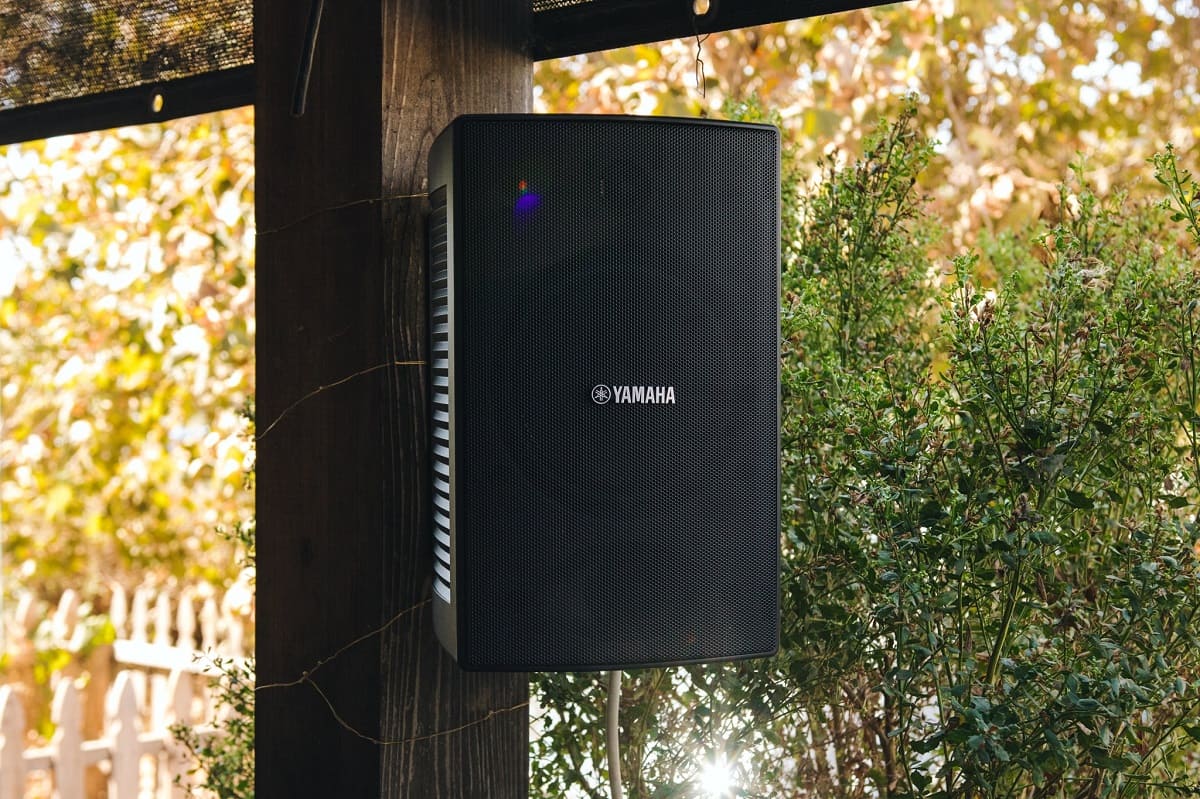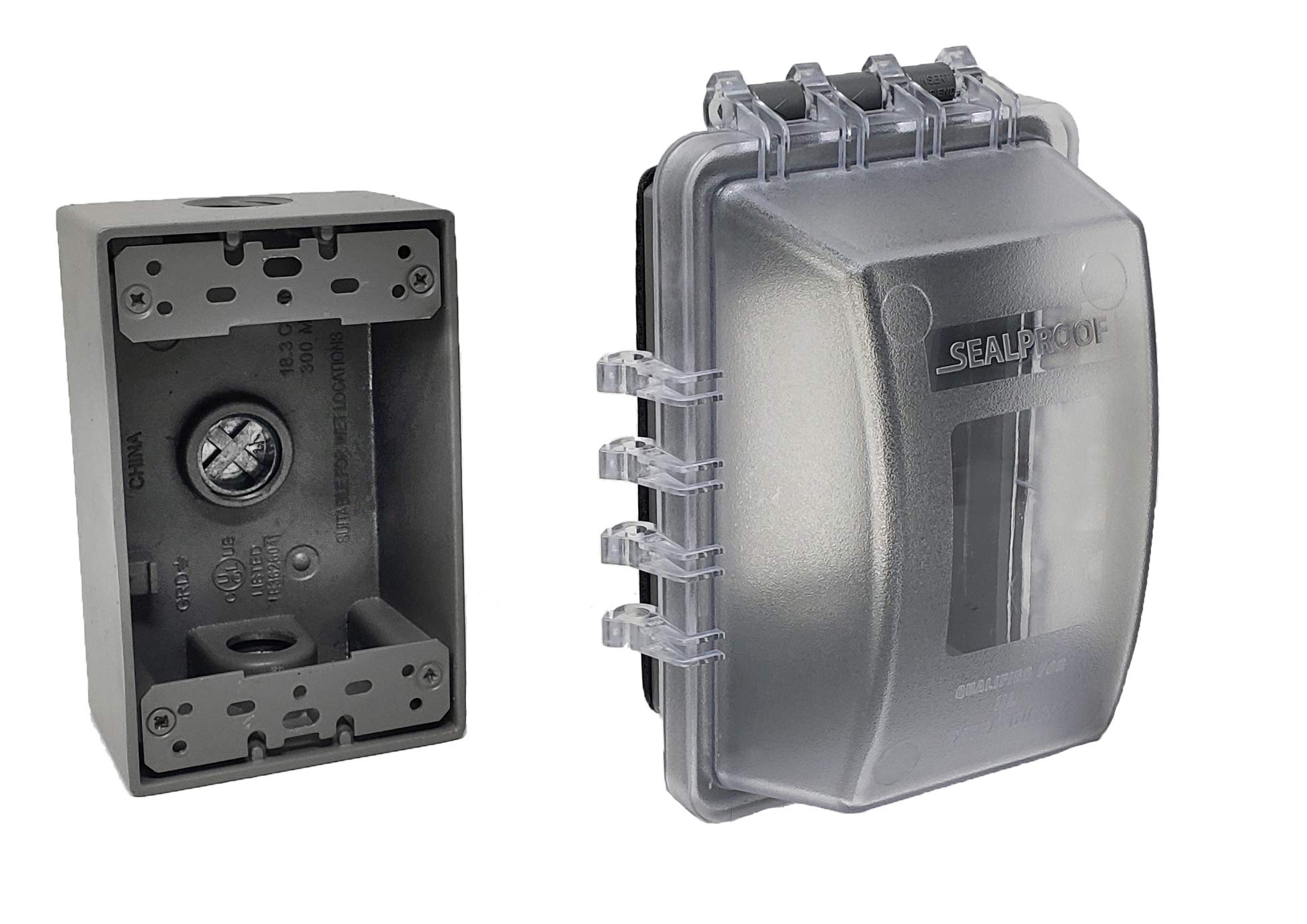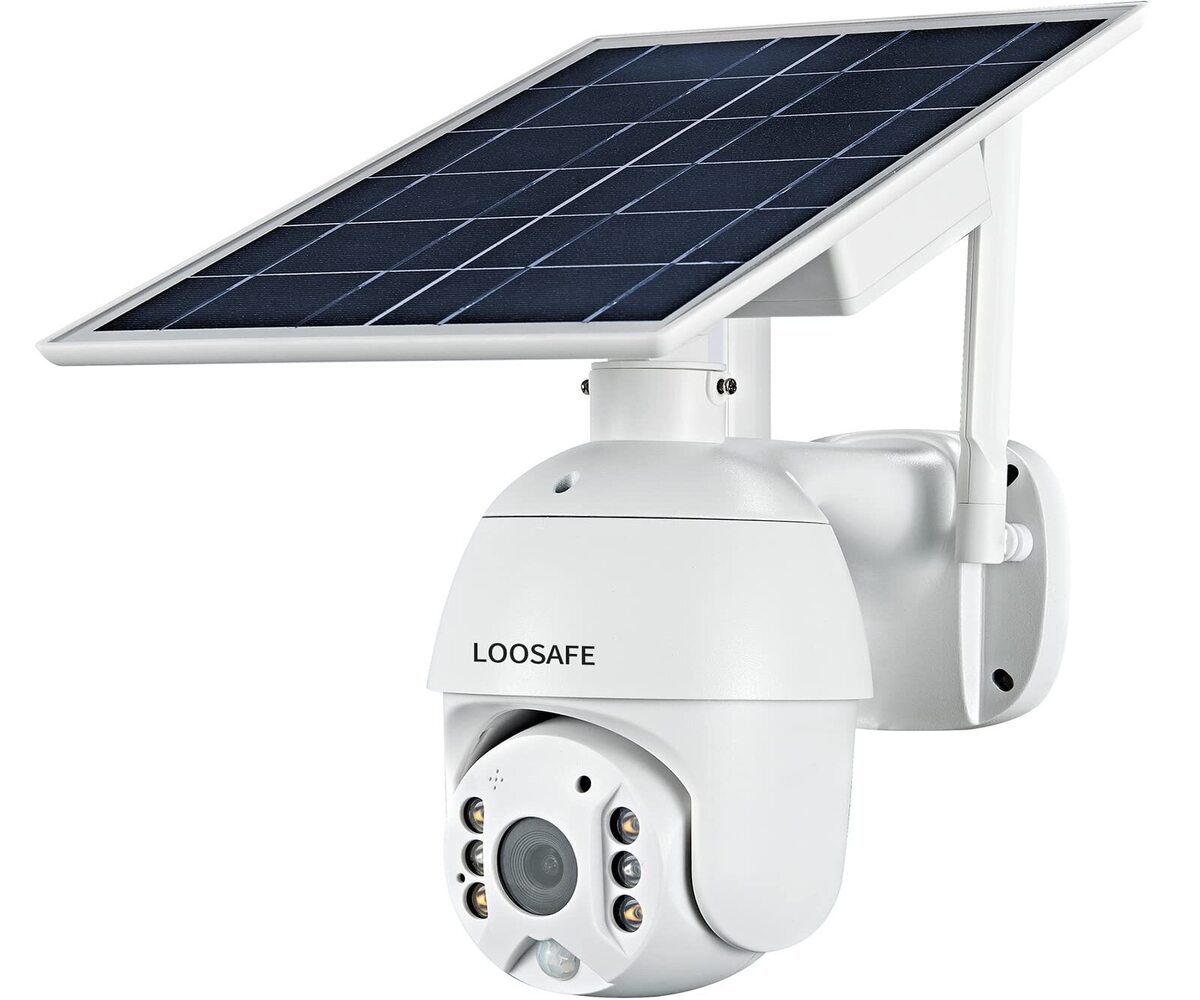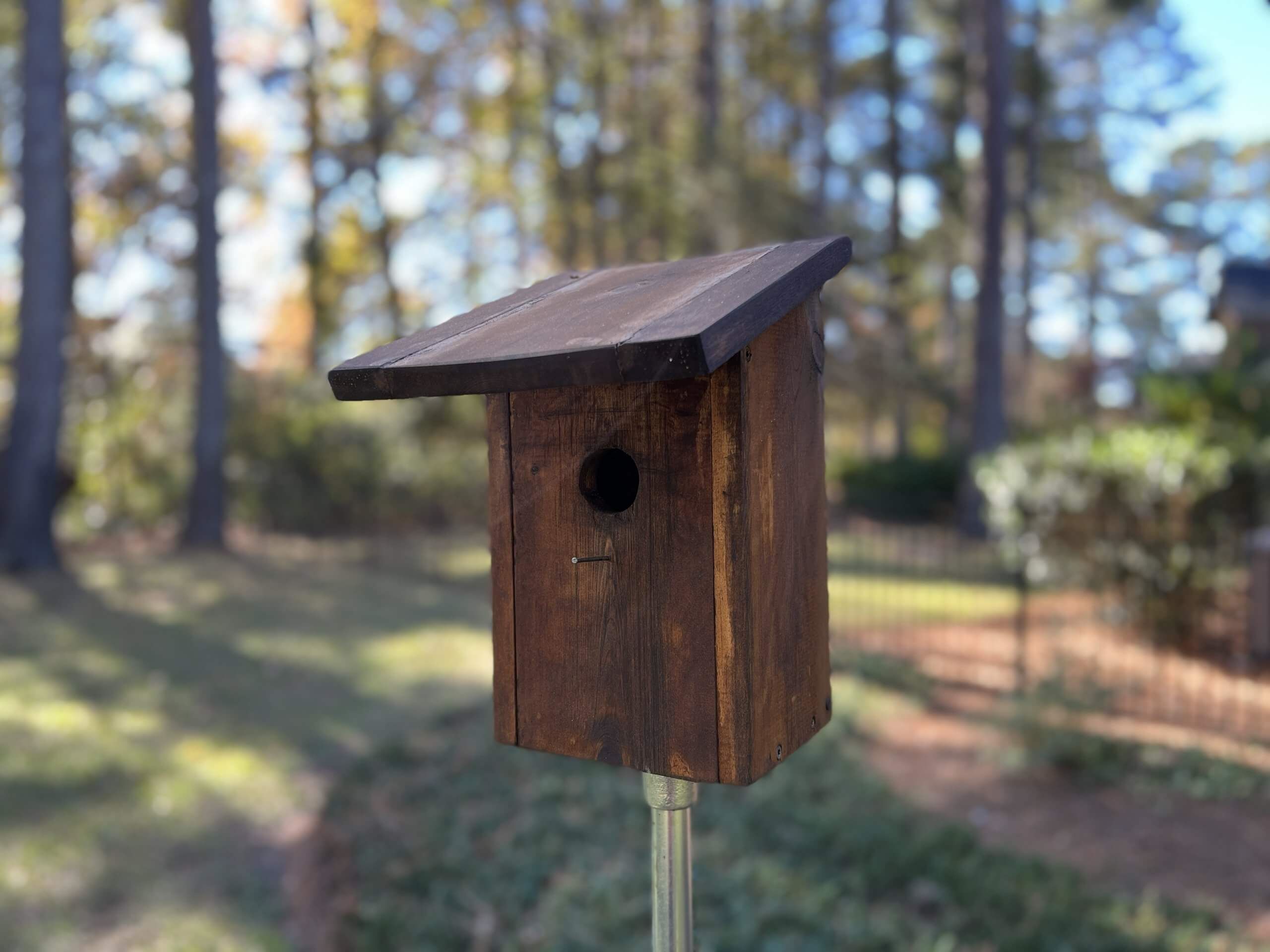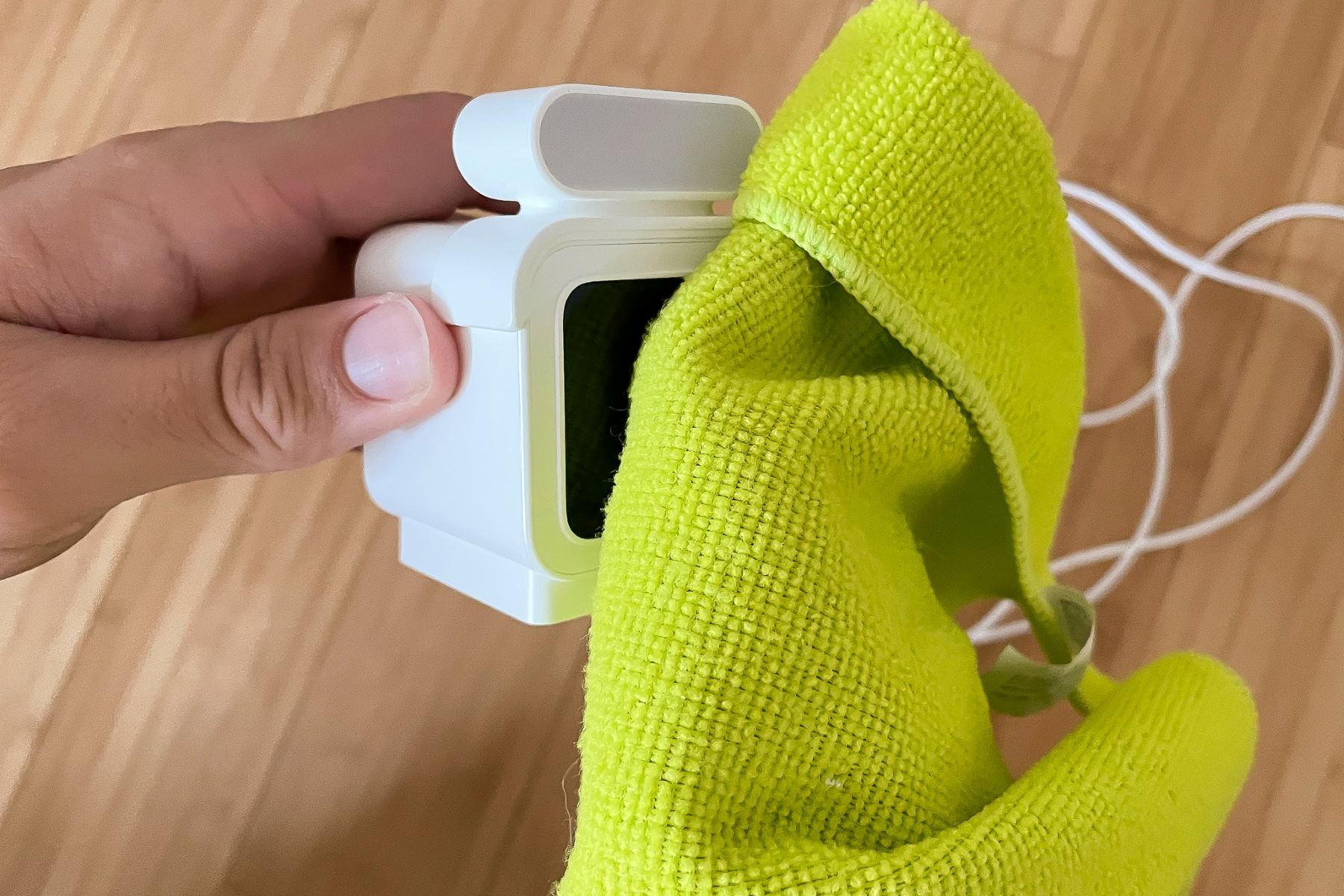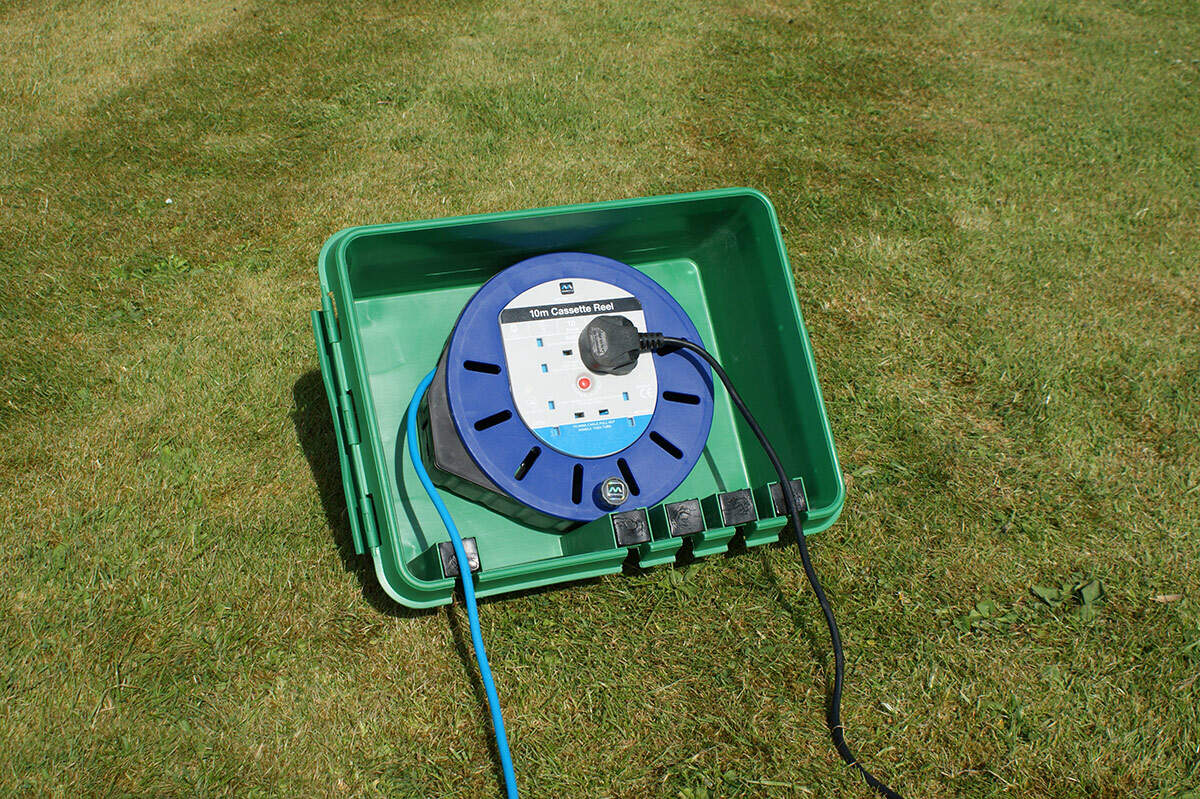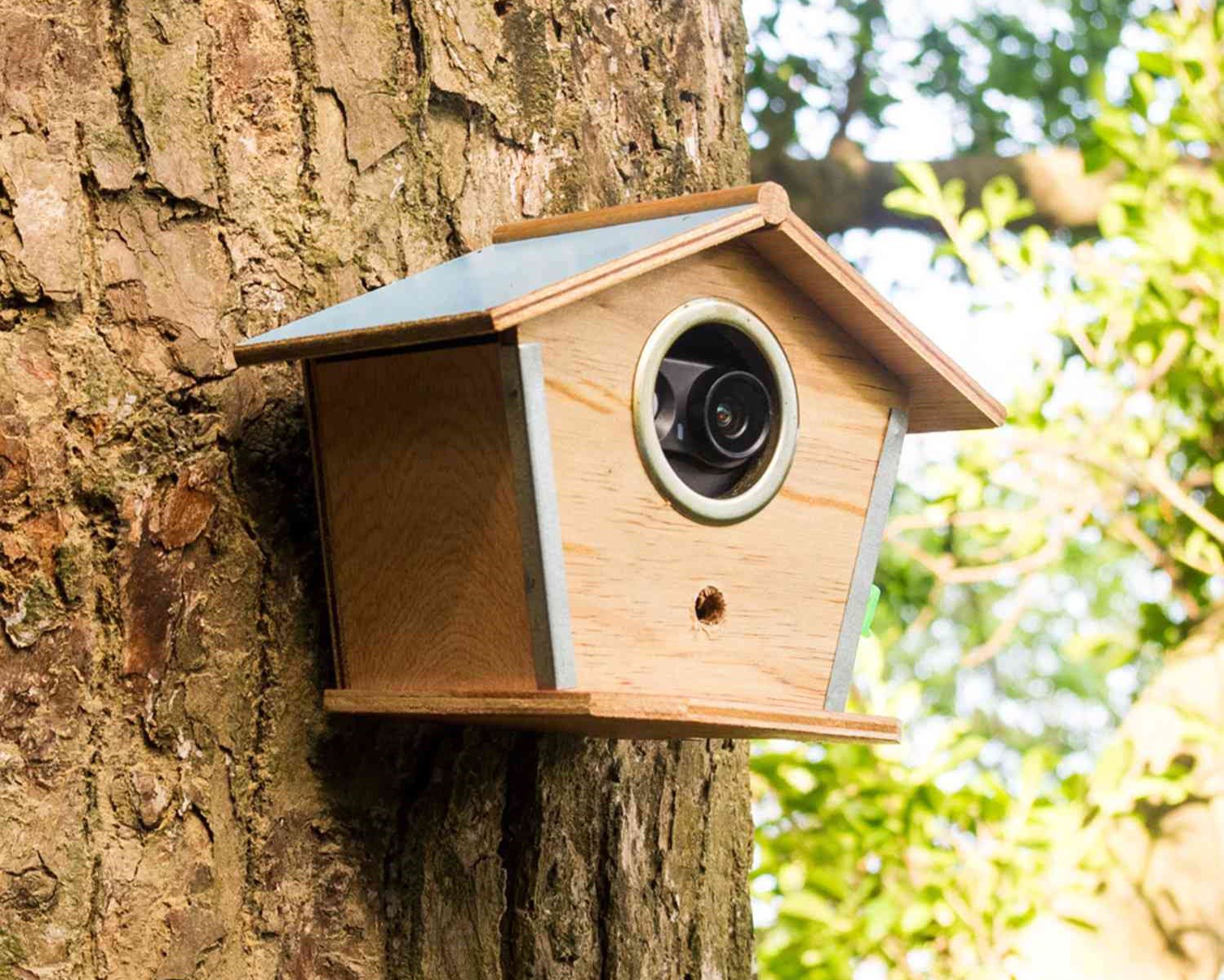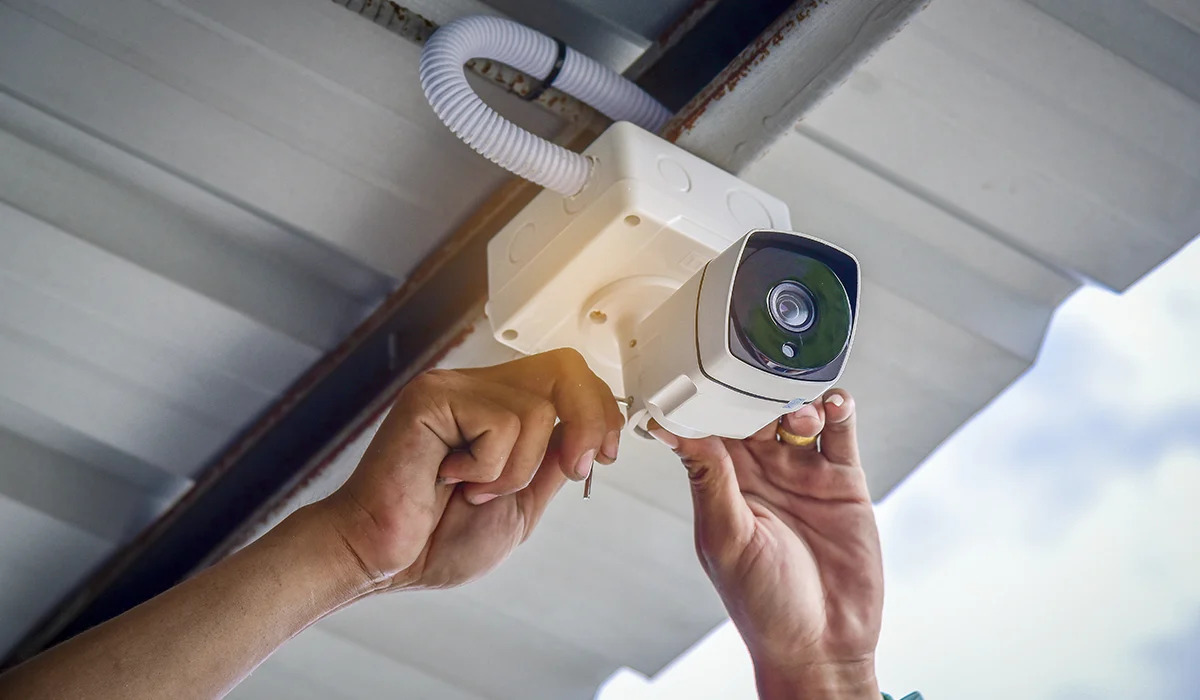Home>Home Security and Surveillance>How To Weatherproof The Outdoor Camera Power
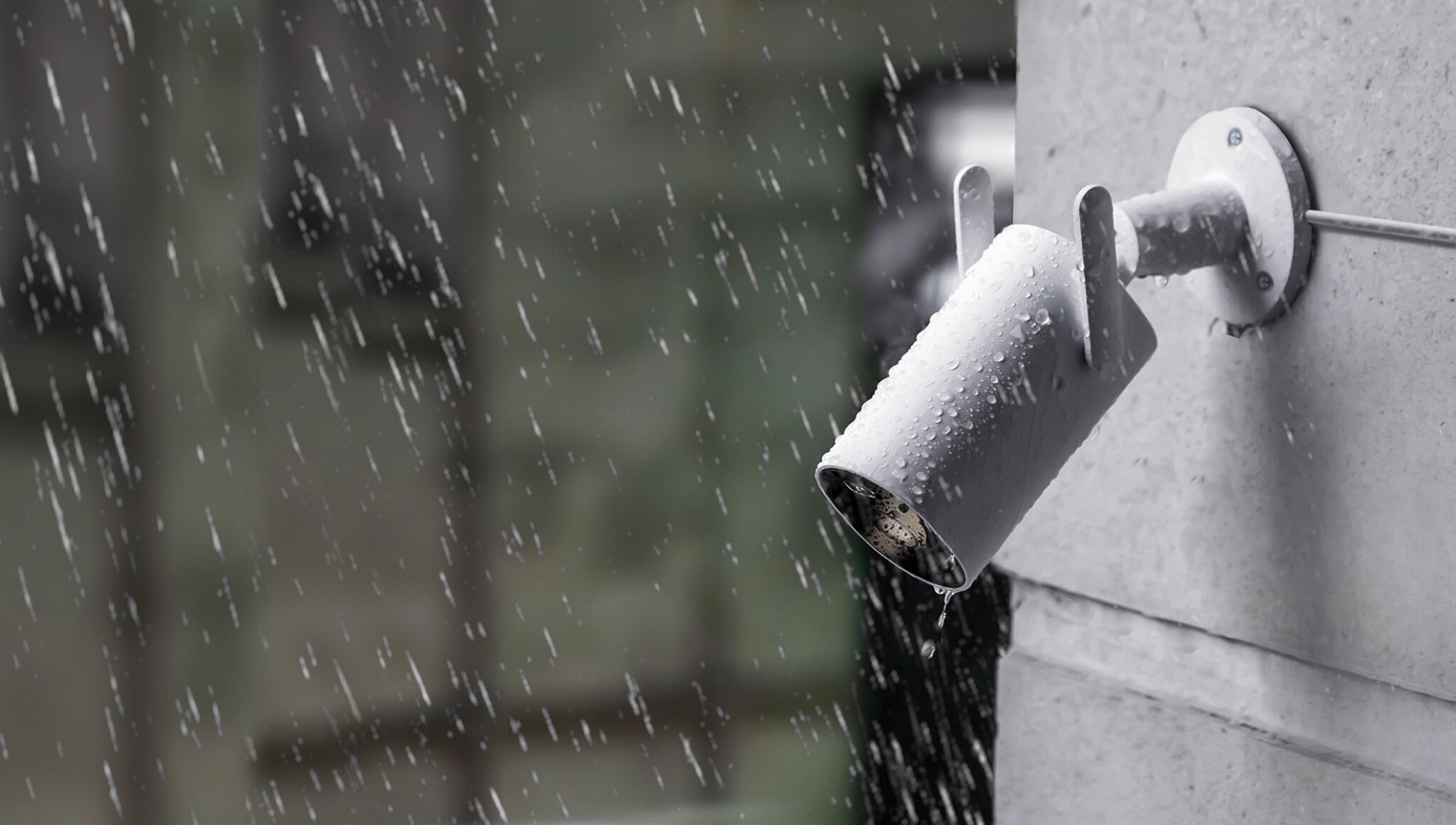

Home Security and Surveillance
How To Weatherproof The Outdoor Camera Power
Modified: March 6, 2024
Discover how to weatherproof the power of your outdoor camera with our expert home security and surveillance tips. Keep your footage safe and clear in any conditions!
(Many of the links in this article redirect to a specific reviewed product. Your purchase of these products through affiliate links helps to generate commission for Storables.com, at no extra cost. Learn more)
Introduction
Welcome to this comprehensive guide on how to weatherproof the outdoor camera power source. Whether you are a homeowner looking to enhance the security of your property or a business owner seeking to protect your premises, having a reliable outdoor camera system is essential. However, it is equally important to ensure that the power source for these cameras is well-protected from the elements.
Outdoor camera installations are designed to withstand various weather conditions, from scorching heat to freezing temperatures, rain, and even snow. However, over time, exposure to these elements can take a toll on the power source, reducing its efficiency and potentially leading to malfunctions. That’s why it is crucial to weatherproof the outdoor camera power source to ensure its longevity and proper functioning.
In this guide, we will delve into the various aspects of weatherproofing the outdoor camera power source. We will discuss the importance of understanding the power source, assessing the weather conditions, selecting the right outdoor power source, and providing tips on protecting it from the elements. By the end of this guide, you will have all the knowledge needed to safeguard your outdoor camera power source and maintain the reliability of your surveillance system.
Key Takeaways:
- Protecting the outdoor camera power source from weather damage is crucial for maintaining a reliable surveillance system. Understanding the power source, assessing weather conditions, and selecting the right power supply are essential steps in ensuring long-term functionality.
- Implementing weatherproofing measures such as securing connections, using enclosures, and regular maintenance can safeguard the power source from potential damage. These steps are vital for extending the lifespan and reliability of the surveillance system.
Understanding the Outdoor Camera Power Source
Before diving into weatherproofing the outdoor camera power source, it is vital to understand how these systems work. Most outdoor cameras are powered by electricity, either through a direct wired connection or wirelessly through batteries or solar panels.
For wired camera systems, the power source typically originates from an electrical outlet or a centralized power distribution box. The power is then transmitted through cables to the cameras, providing them with the necessary energy to function. It is crucial to ensure that the power supply is reliable and protected from any external factors that might compromise its performance.
On the other hand, wireless camera systems rely on alternative power sources, such as batteries or solar panels. Batteries provide a portable and convenient option, but they require regular monitoring and replacement to maintain a consistent power supply. Solar panels, on the other hand, harness the energy of the sun to power the cameras. However, they require adequate sunlight exposure and proper positioning to maximize their efficiency.
Understanding the power source of your outdoor cameras is essential because it will determine the type of weatherproofing measures you need to undertake. Different power sources may require specific protection methods, so it’s crucial to identify which system you have in place.
Additionally, it is important to consider the power requirements of your outdoor camera system. Take note of the voltage and wattage needed for your cameras to operate effectively. This information will help you select the appropriate weatherproof power source and ensure that the electrical components are compatible.
By gaining a thorough understanding of the outdoor camera power source and its specific requirements, you can proceed with confidence in implementing the necessary weatherproofing measures to protect and maintain the longevity of your surveillance system.
Assessing the Weather Conditions
When it comes to weatherproofing the outdoor camera power source, the first step is to assess the prevailing weather conditions in your area. Understanding the climate and its potential impact on your surveillance system is crucial in determining the level of protection required.
Extreme weather conditions, such as heavy rain, high humidity, extreme heat, or freezing temperatures, can pose significant challenges to the power source of outdoor cameras. These conditions can lead to corrosion, damage to electrical components, and overall deterioration of the system’s performance.
Start by evaluating the average weather patterns in your region. Consider the temperature ranges throughout the year, the frequency and intensity of rain or snowfall, and the potential exposure to harsh winds or direct sunlight. This assessment will help you anticipate the specific challenges your outdoor camera power source may face and take appropriate measures to address them.
Additionally, it’s important to recognize any micro-climates or unique weather patterns that may exist in your immediate surroundings. For example, if your property is close to the coast, you may need to consider the corrosive effects of saltwater or salty air on the camera’s power source. Similarly, if you live in an area prone to heavy storms or hurricanes, you must prepare for the possibility of power outages and take steps to protect your system from any unforeseen damage.
By thoroughly assessing the weather conditions in your area, you will have a better understanding of the specific challenges your outdoor camera power source may face. This knowledge will enable you to select appropriate weatherproofing measures and make informed decisions about the type of power source and protection required for your surveillance system.
Selecting the Right Outdoor Power Source
Choosing the right outdoor power source for your camera system is essential for ensuring reliable and uninterrupted operation. The power source you select will depend on various factors, including the location of your cameras, the availability of electrical outlets, and the specific requirements of your surveillance system.
If you have access to electrical outlets in close proximity to your outdoor camera installation, a wired power source is often the most convenient and reliable option. You can connect the cameras directly to an electrical outlet or use a centralized power distribution box to supply power to multiple cameras. Wired power sources provide a continuous and stable power supply, eliminating the need for frequent battery replacement or solar panel repositioning.
Alternatively, if access to electrical outlets is limited or if you prefer a more flexible installation, wireless power sources might be a suitable choice. Wireless cameras can be powered by batteries or solar panels. Battery-powered cameras offer portability and rapid deployment without the need for wiring. However, it is important to regularly check the battery levels and replace them as needed to maintain uninterrupted power.
Solar-powered cameras, on the other hand, harness the energy of the sun to charge internal batteries, providing a sustainable and environmentally friendly option. These cameras are equipped with solar panels that capture sunlight and convert it into electrical energy. When considering solar power, ensure that your cameras are positioned to receive adequate sunlight throughout the day, especially in locations with limited exposure to direct sunlight.
When selecting the right outdoor power source, consider the specific needs and limitations of your surveillance system. Evaluate factors such as the number of cameras, their power requirements, the available installation options, and the level of maintenance required. By selecting the appropriate power source, you can ensure a reliable and efficient operation of your outdoor camera system.
Tips for Protecting the Outdoor Camera Power Source
Protecting the outdoor camera power source is essential to ensure the longevity and reliable operation of your surveillance system. Here are some valuable tips to help you safeguard your power source from the elements:
- Invest in weatherproof power supplies: Look for power supplies that are specifically designed for outdoor use. These units are typically rated for water resistance and built with durable materials to withstand various weather conditions.
- Properly seal electrical connections: Ensure that all electrical connections are adequately sealed to prevent water or moisture infiltration. You can use weatherproof connectors, electrical tape, or silicone sealants to create a waterproof seal around the connections.
- Elevate the power source: To prevent water damage, elevate the power source off the ground or install it in a waterproof enclosure. This will help protect it from flooding or standing water during heavy rainfall.
- Use weatherproof enclosures and covers: Consider installing weatherproof enclosures or covers to protect the power source from rain, snow, and other harsh weather conditions. These enclosures provide an extra layer of protection and ensure the longevity of the power source.
- Regularly inspect and clean: Perform routine inspections to check for any signs of damage or wear. Clean the power source and surrounding area regularly to remove dirt, dust, and debris that could affect its performance.
- Consider surge protection: Install surge protectors to safeguard the power source from voltage spikes caused by lightning strikes or power surges. Surge protectors help minimize the risk of damage to the electrical components of the camera system.
- Ensure proper ventilation: Adequate ventilation is crucial to prevent overheating of the power source. Make sure the power source is not obstructed by objects or placed in a confined area where the airflow is limited.
- Monitor power usage: Keep track of the power usage of your outdoor camera system to ensure it’s operating within the recommended limits. Overloading the power source can lead to overheating and potential damage.
- Implement regular maintenance: Schedule regular maintenance checks to inspect and test the power source. Replace any worn-out or damaged components promptly to prevent further damage and maintain the optimal functioning of the surveillance system.
By following these tips, you can effectively protect the outdoor camera power source from the elements, ensuring the reliability and longevity of your surveillance system. Remember, proper maintenance and attention to detail are key to keeping your power source in optimal condition for years to come.
To weatherproof the outdoor camera power, use waterproof cable connectors and enclosures to protect the power supply from rain and moisture. Ensure all connections are sealed tightly to prevent water damage.
Securing Connections and Wires
Securing the connections and wires of your outdoor camera power source is crucial for maintaining a reliable and efficient surveillance system. Loose or exposed wires can lead to power loss, connectivity issues, and potential damage to the power source. Here are some tips to help you secure your connections and wires:
- Properly organize and route the wires: Ensure that the wires are neatly organized and properly routed to prevent them from being accidentally pulled, stretched, or damaged. Use cable clips or ties to secure the wires to walls, ceilings, or any other nearby structures.
- Protect exposed wires: If there are any exposed wires, especially in outdoor installations, protect them by using conduit or protective tubing. This will shield the wires from UV rays, moisture, and physical damage, prolonging their lifespan.
- Waterproof connectors: Use waterproof connectors to join wires together. These connectors provide a watertight seal, preventing water or moisture from entering and causing damage to the connections. Apply a layer of silicone sealant to the connectors for added protection.
- Bury or hide the wires: If your outdoor camera system requires long wire runs, consider burying the wires underground or hiding them within walls. This will protect the wires from exposure to the elements and potential damage caused by environmental factors.
- Secure connections with electrical tape: Once the wiring connections are made, use electrical tape to secure and protect them further. Be sure to wrap the tape tightly around the connections, covering them completely to prevent any moisture or debris from entering.
- Label the wires: To make future maintenance or troubleshooting easier, label each wire with its corresponding connection point. This will help you identify and trace the wires accurately, minimizing any potential confusion or mistakes during repairs or upgrades.
- Regularly inspect and test the connections: Perform routine inspections to check for any signs of loose connections or wires. Ensure that all connections are secure and properly tightened. Conduct regular tests to verify that the power is flowing consistently through the wires.
- Consider using IP-rated connectors: If your outdoor camera system requires high-level protection against water or dust, consider using connectors with an IP rating. IP-rated connectors are designed to provide superior waterproof and dustproof capabilities. Choose connectors that match the specific IP rating required for your installation.
By implementing these tips, you can effectively secure the connections and wires of your outdoor camera power source, reducing the risk of power loss, connectivity issues, and potential damage. Maintaining proper wire management ensures the integrity and reliability of your surveillance system, allowing for seamless monitoring and enhanced security.
Utilizing Weatherproof Enclosures and Covers
Utilizing weatherproof enclosures and covers is an effective way to protect your outdoor camera power source from the elements. These protective measures shield the power source from rain, snow, direct sunlight, and other harsh weather conditions. Here are some key considerations when it comes to weatherproof enclosures and covers:
- Selecting the right enclosure: Choose an enclosure that is specifically designed for outdoor use and compatible with your power source. Look for enclosures that are constructed with durable materials such as polycarbonate or metal, capable of withstanding various weather conditions.
- Ensuring proper sizing: The enclosure should have enough space to accommodate your power source and any additional components like surge protectors or transformers. It should also provide sufficient room for ventilation to prevent overheating.
- Waterproof and dustproof ratings: Check for enclosures with appropriate waterproof and dustproof ratings, such as IP65 or higher. These ratings indicate the enclosure’s ability to protect against water and dust ingress, ensuring the safety and functionality of your power source.
- Sealing openings: Make sure all openings in the enclosure, such as cable entry points or ventilation holes, are properly sealed. Use grommets, rubber gaskets, or sealing compounds to create a watertight seal and prevent moisture from entering the enclosure.
- Mounting the enclosure: Properly mount the enclosure in a secure and elevated position. This will minimize direct exposure to water or moisture and reduce the risk of accidental damage. Ensure that the mounting hardware, such as brackets or screws, are weather-resistant and capable of supporting the weight of the enclosure.
- Using protective covers: In addition to enclosures, consider using protective covers specifically designed for your camera power source or connectors. These covers provide an extra layer of protection against rain, snow, and UV rays, extending the lifespan of your power source.
- Regular cleaning and maintenance: Periodically inspect the enclosure and covers for any signs of damage or wear. Clean them regularly to remove dirt, debris, or any other substances that may accumulate on the surfaces. This will help maintain the effectiveness of the weatherproofing measures.
- Considering climate-specific needs: Depending on your climate, you may need to consider additional weatherproofing measures. For example, in areas prone to high winds or hurricanes, choose enclosures and covers with reinforced construction to withstand strong gusts. In regions with extreme temperatures, opt for enclosures with insulation to protect against heat or cold.
By utilizing weatherproof enclosures and covers, you can significantly enhance the protection of your outdoor camera power source. These measures not only safeguard the power source from the elements but also extend its lifespan, ensuring long-term reliability and optimal performance of your surveillance system.
Regular Maintenance and Inspections
Regular maintenance and inspections are critical for ensuring the optimal performance and longevity of your outdoor camera power source. By implementing a routine maintenance plan, you can identify and address any issues or potential problems before they escalate. Here are some essential maintenance tips to keep in mind:
- Schedule routine inspections: Set a schedule for regular inspections of your outdoor camera power source. This can be done monthly, quarterly, or annually, depending on the manufacturer’s recommendations and the specific requirements of your surveillance system.
- Check for loose connections: Inspect all wiring connections, terminals, and plugs to ensure they are tight and secure. Loose connections can cause power loss or intermittent connectivity issues, affecting the performance of your cameras.
- Inspect for physical damage: Look for any signs of physical damage or wear on the power source, such as cracks, dents, or exposed wires. Address any damage promptly to prevent further deterioration or potential safety hazards.
- Test voltage levels: Use a multimeter or voltage tester to measure the voltage levels of your power source. Ensure that the readings are within the recommended range specified by the manufacturer. Abnormal voltage levels can indicate a potential issue that needs attention.
- Clean the power source: Regularly clean the power source and surrounding area to remove dirt, dust, and debris. Use a soft cloth or brush to gently wipe the surfaces. Avoid using harsh chemicals or abrasive materials that may damage the components.
- Check for signs of water damage: Inspect the power source and its connections for any signs of water damage, such as rust or corrosion. Water infiltration can lead to electrical short circuits or component failure. If you notice water damage, address the issue immediately and reinforce the weatherproofing measures.
- Inspect the enclosure and covers: If you have installed weatherproof enclosures and covers, inspect them periodically for any damage or wear. Check for cracks, loose fasteners, or signs of degradation. Replace or repair the enclosures and covers as needed to maintain their effectiveness.
- Monitor power usage: Keep track of the power usage of your outdoor camera system. Note any significant changes in power consumption, which could indicate a malfunctioning power source or increased security needs. Address any unusual power usage promptly.
- Follow manufacturer’s recommendations: Always refer to the manufacturer’s guidelines and instructions for maintenance and inspection procedures specific to your outdoor camera power source. Adhering to these recommendations will ensure the proper care and performance of your equipment.
By implementing regular maintenance and inspection practices, you can identify and address any issues with your outdoor camera power source before they impact the functionality of your surveillance system. Consistent monitoring and proactive maintenance will help maximize the lifespan and reliability of your power source, ensuring continuous security and peace of mind.
Conclusion
Weatherproofing the outdoor camera power source is essential for maintaining the reliability and longevity of your surveillance system. By implementing appropriate measures to protect the power source from the elements, you can ensure seamless functionality and enhanced security for your property. Throughout this guide, we have explored various aspects of weatherproofing, from understanding the power source to assessing the weather conditions, selecting the right outdoor power source, and providing tips for protection.
Understanding the power source and its specific requirements is the first step in implementing effective weatherproofing measures. Whether you have a wired system or rely on wireless power sources such as batteries or solar panels, understanding the power requirements and limitations is essential to make informed decisions.
Assessing the weather conditions in your area helps you anticipate potential challenges and select the appropriate weatherproofing measures. Extreme weather conditions like rain, snow, extreme heat, or freezing temperatures can have detrimental effects on the power source. By understanding the weather patterns and micro-climates specific to your location, you can take appropriate precautions.
Selecting the right outdoor power source is crucial to ensure reliable and uninterrupted operation of your camera system. Consider factors such as access to electrical outlets, battery life, and solar panel positioning to make an informed decision. The chosen power source should meet the specific requirements of your outdoor camera system and provide a stable power supply.
Implementing tips for protecting the outdoor camera power source, such as securing connections and wires, utilizing weatherproof enclosures and covers, and regular maintenance and inspections, will help safeguard the power source from potential damage caused by weather conditions, loose connections, or physical wear. These measures ensure the optimal performance of your surveillance system and extend the lifespan of the power source.
By following these guidelines and taking proactive steps to weatherproof the outdoor camera power source, you can ensure the continued functionality and reliability of your surveillance system. Regular maintenance and monitoring will help you address any issues promptly and maintain the security of your property. Remember, protecting the power source is just as important as the cameras themselves when it comes to outdoor surveillance.
Frequently Asked Questions about How To Weatherproof The Outdoor Camera Power
Was this page helpful?
At Storables.com, we guarantee accurate and reliable information. Our content, validated by Expert Board Contributors, is crafted following stringent Editorial Policies. We're committed to providing you with well-researched, expert-backed insights for all your informational needs.
